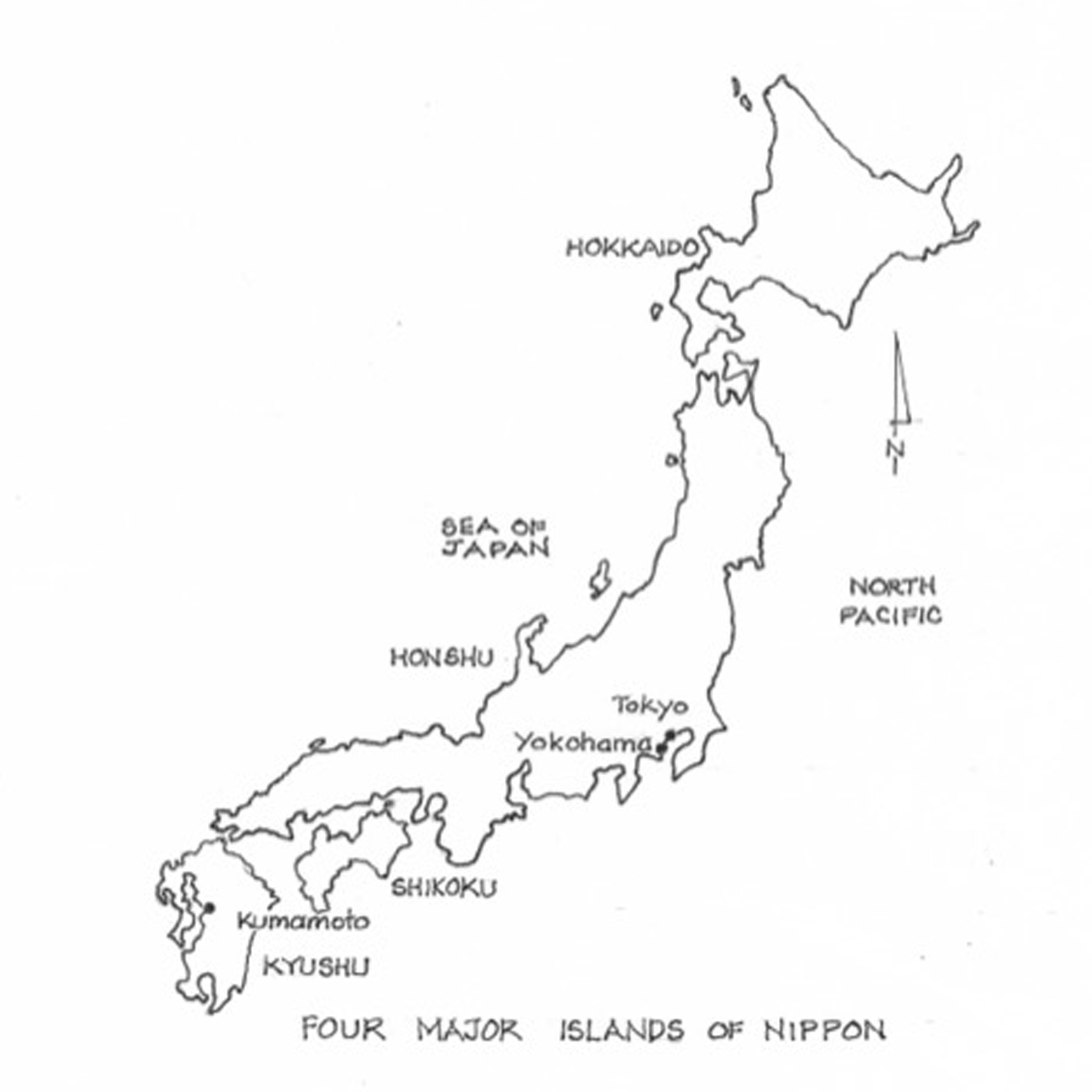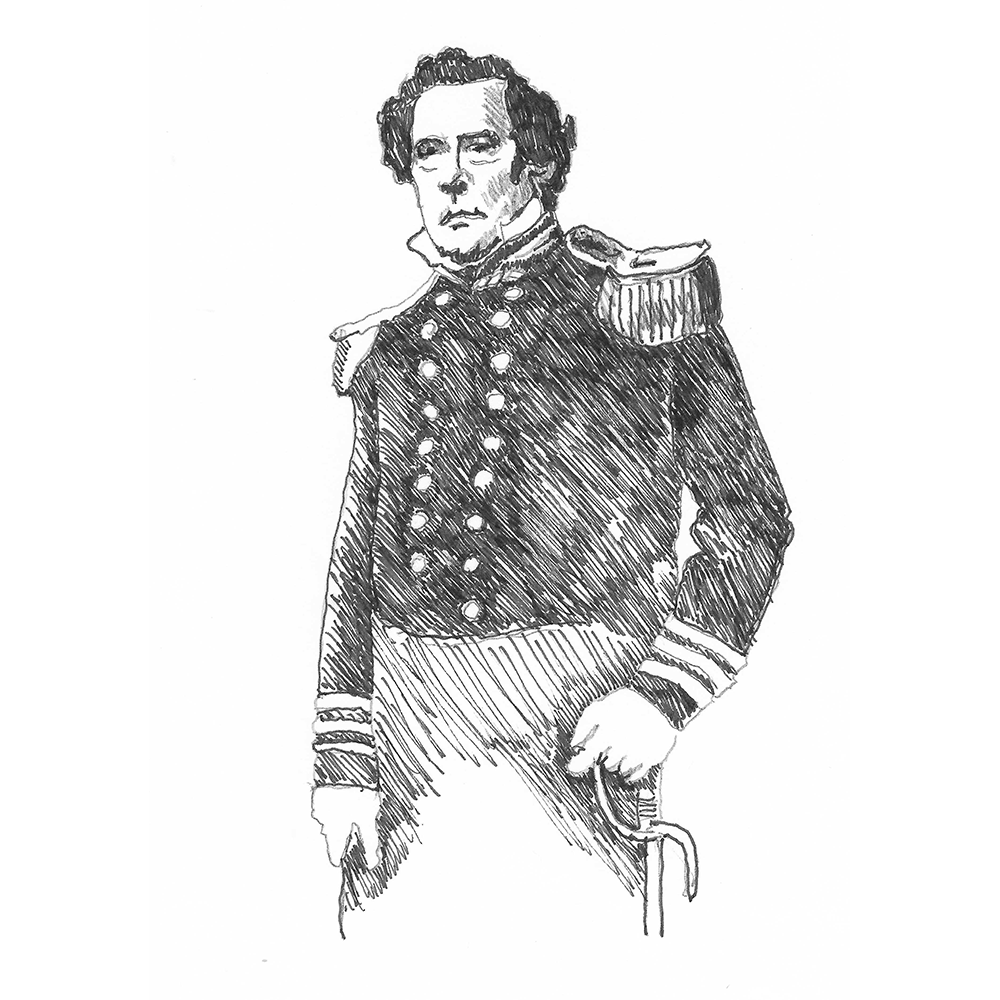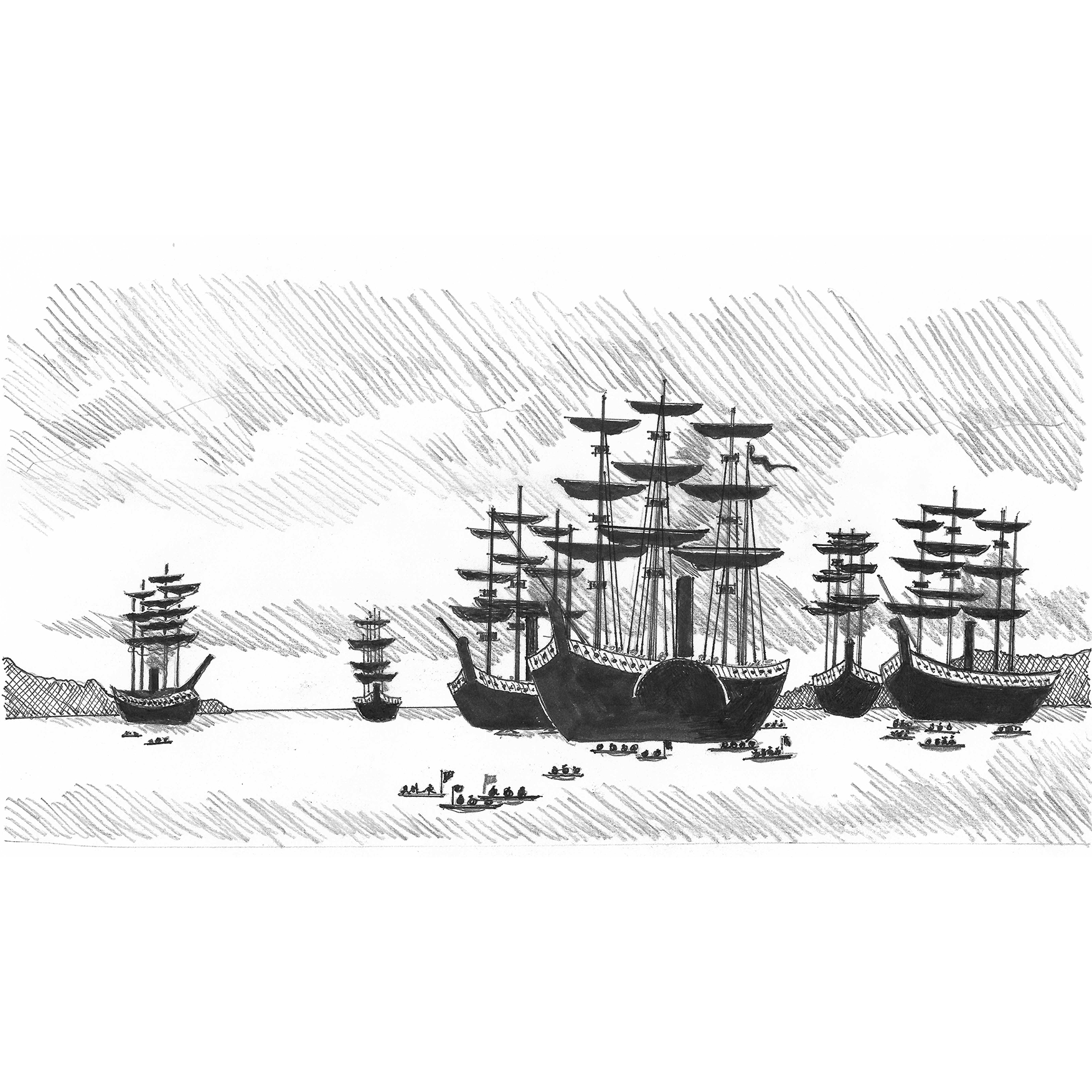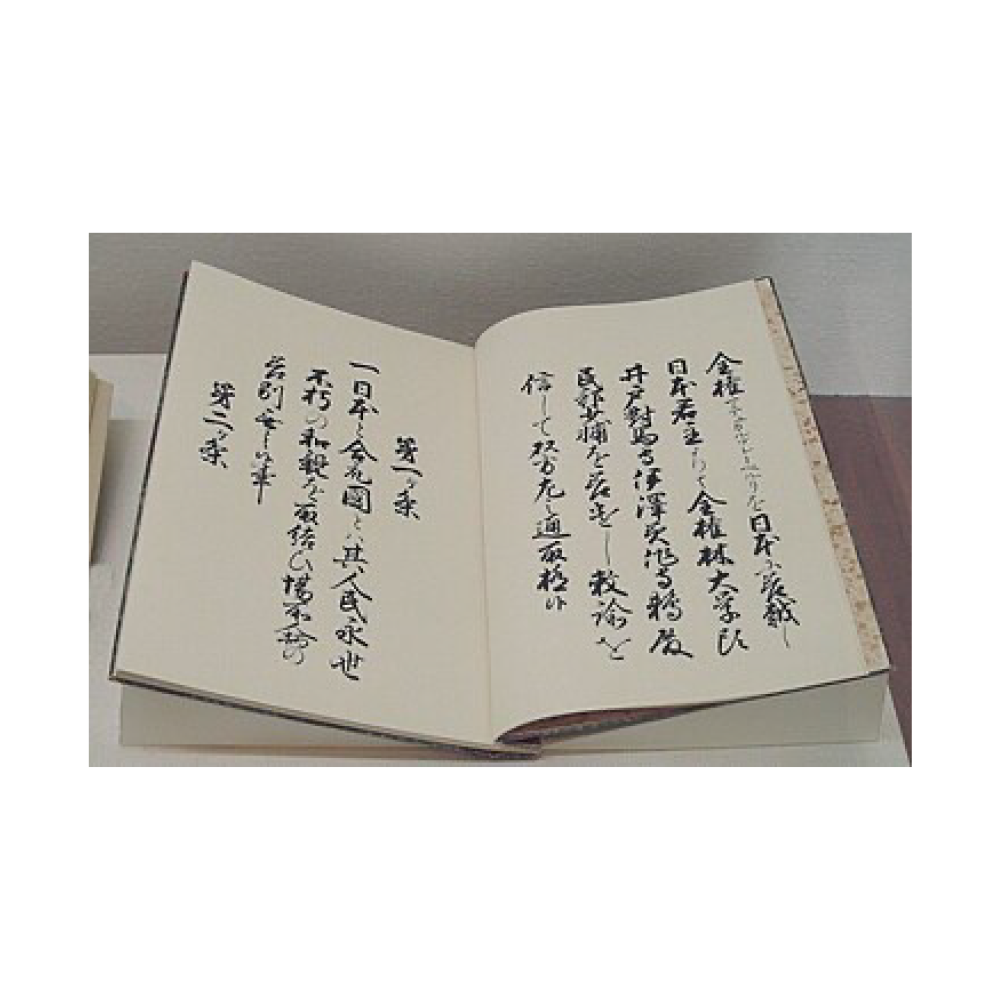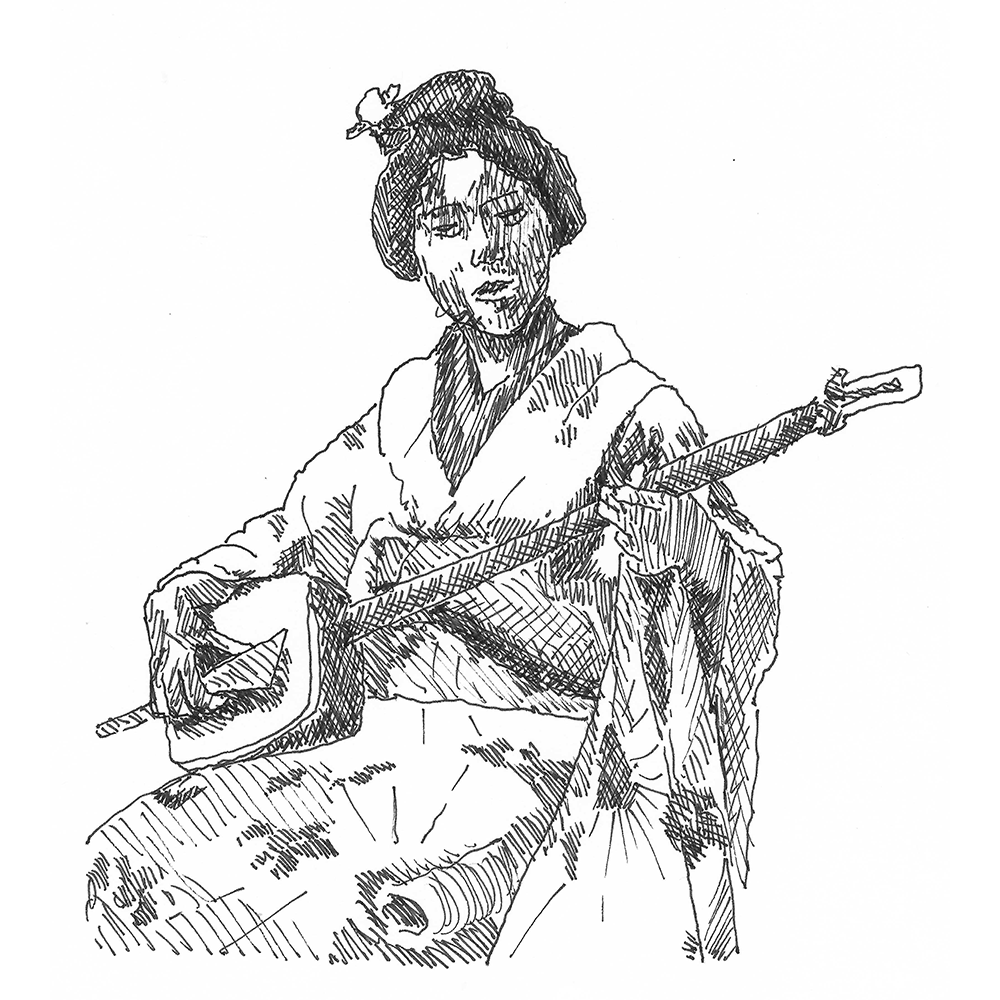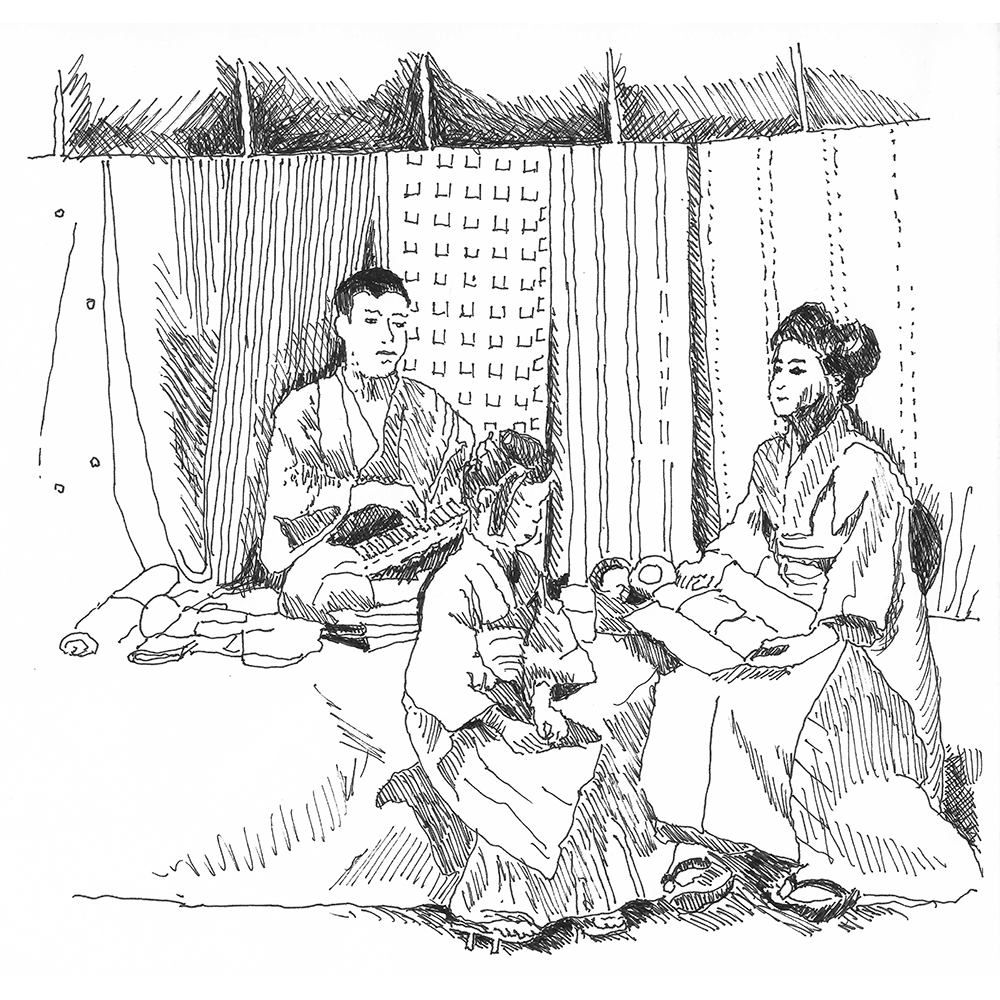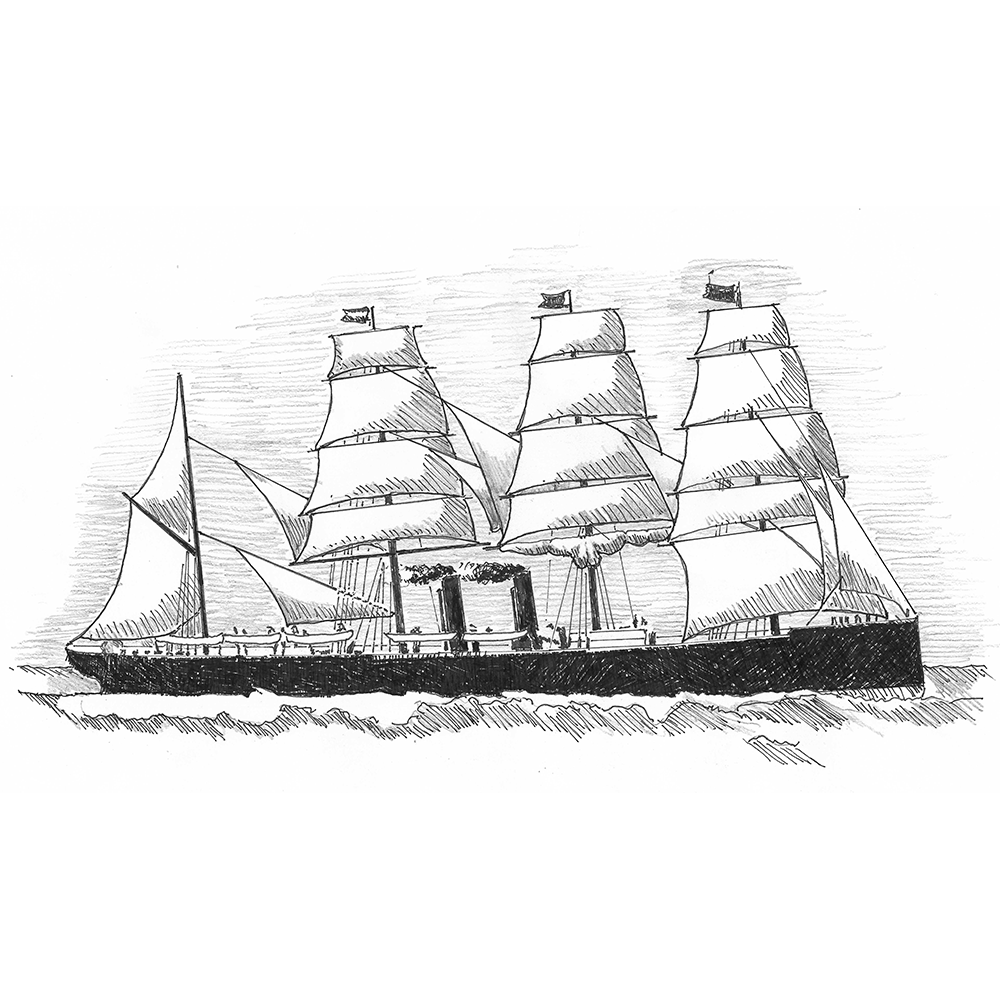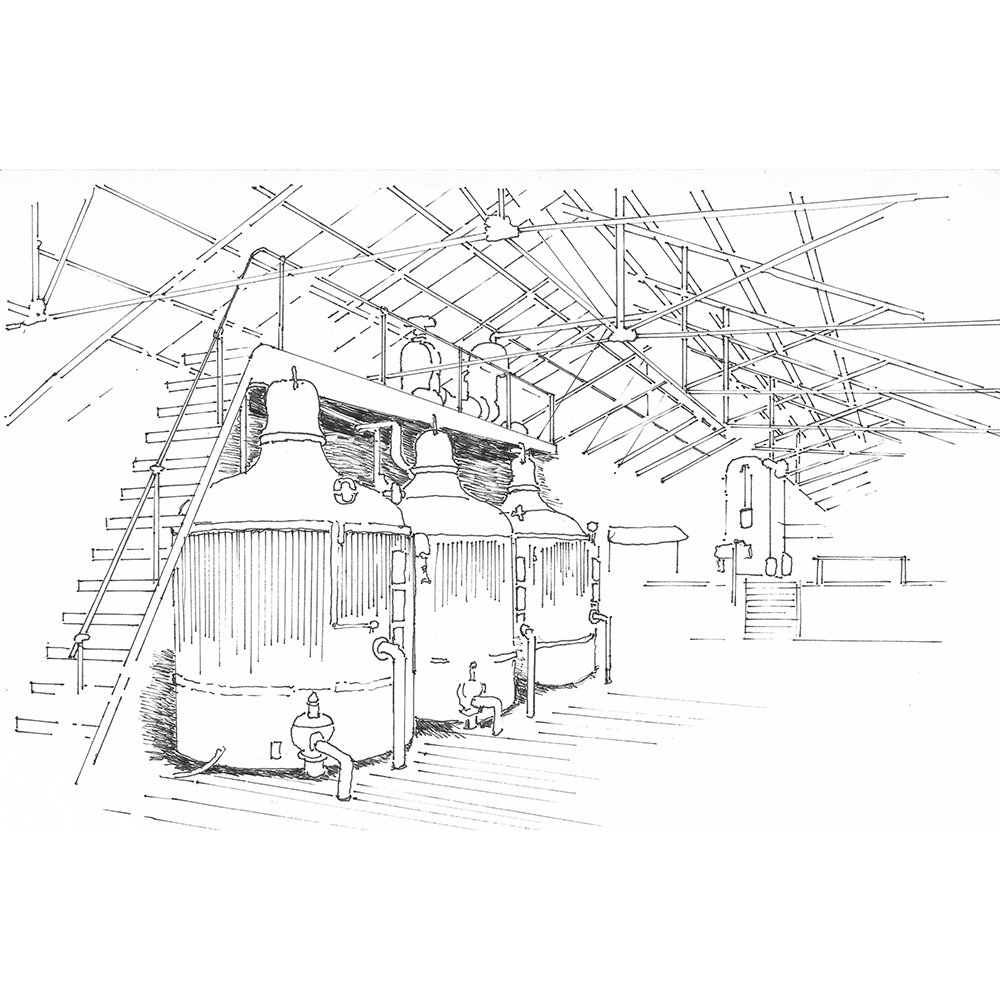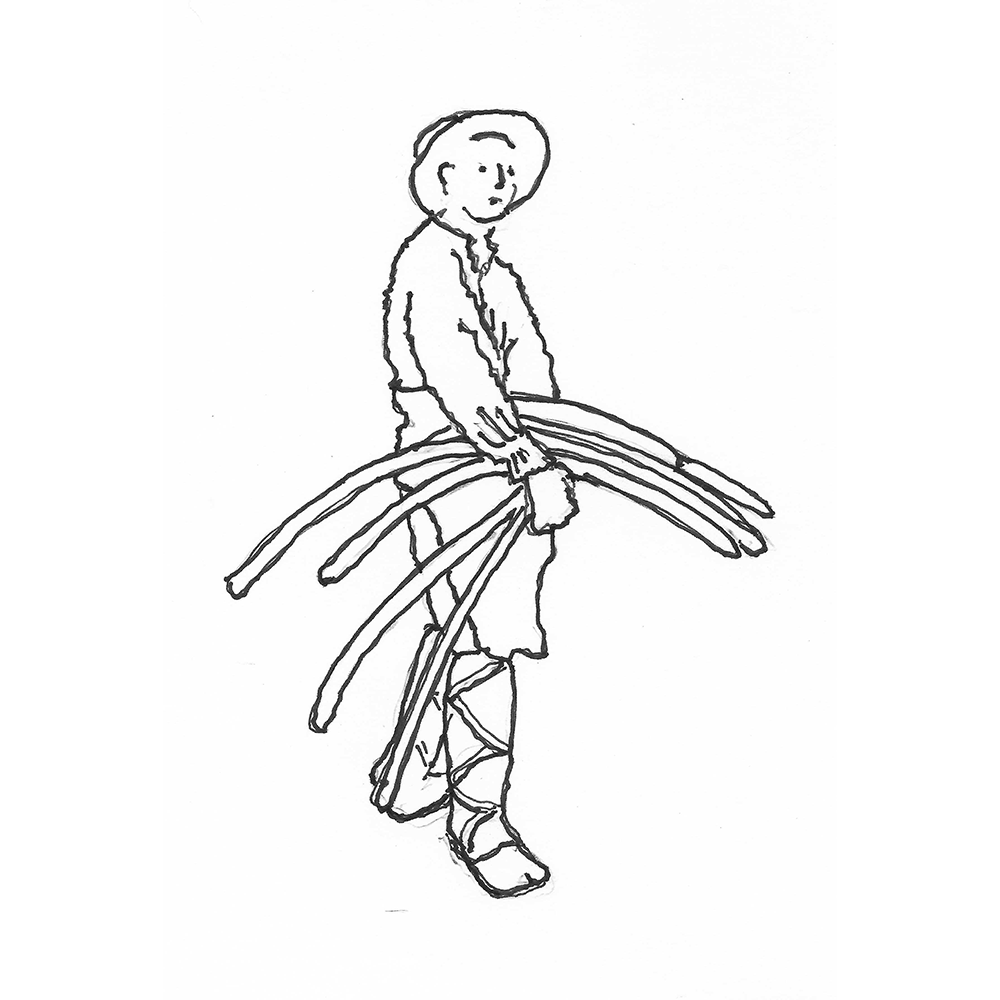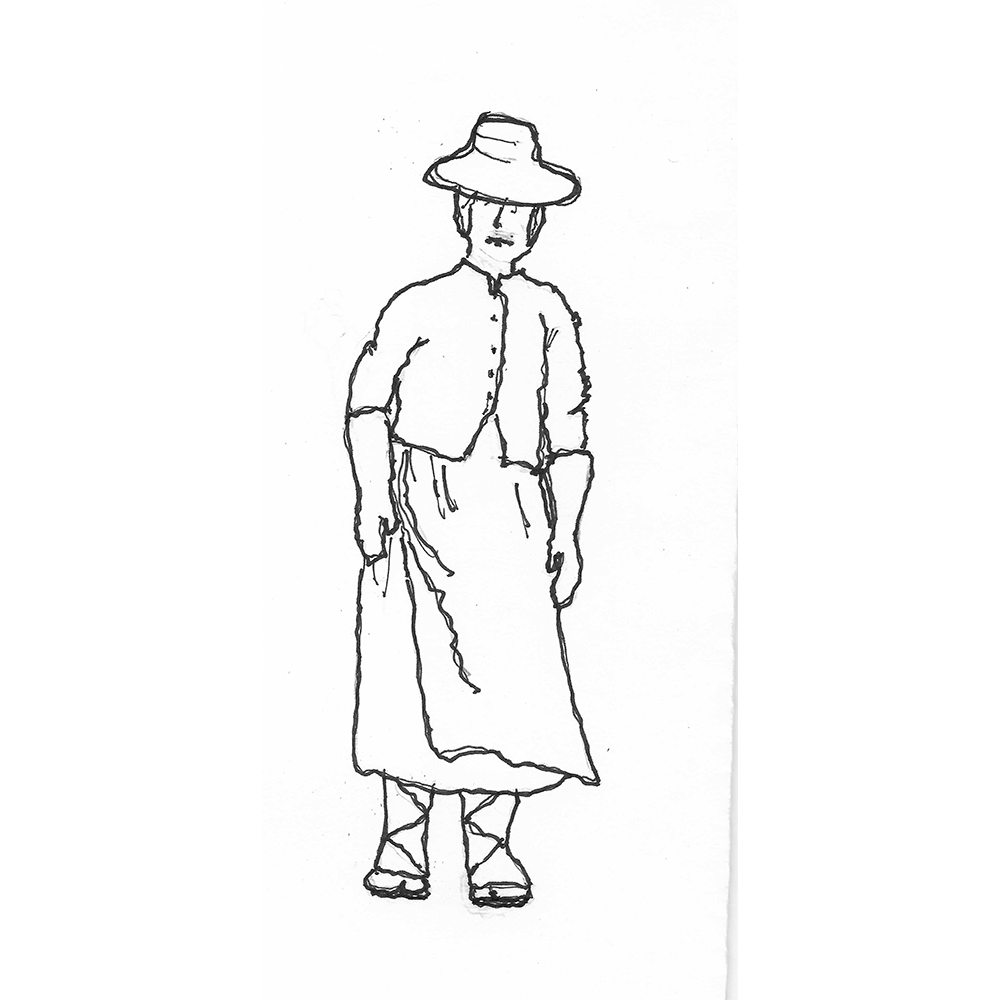HISTORY
In Japan, the Meiji Era Begins in 1854
The U.S. had met with hostility in earlier encounters to try to open ports of Japan. There was a need to create a peaceful treaty between the two nations as both now shared the Pacific ocean. But Japan had been closed to the world for 200 years. To avoid violence but to successfully carry out his mission and command respect, Perry led an armada of nine ships, with 100 mounted cannons into Edo (Tokyo) Bay. Hulls were made waterproof with black pine pitch, a custom in western nations. Two of the ships were steam driven. The huge ships all black, some not using sails or oars to move, were a fearful sight to the Japanese.
All drawings by the author.
Japanese Culture in the 1890s
Although Japan was secluded from the rest of the world for 200 years, it was not an uncivilized country. During that time a relative peace lay over the land which allowed for the arts and theater to develop. Skilled artisans developed superior quality paper, silk, porcelain and steel bladed swords- all unmatched in the rest of the world. These were some of the gifts given to Commodore Perry at the time of the signing of the treaty. However, his unskilled eye did not correctly estimate their value. Japan had valued regular bathing and cleanliness a century before Europe and America. Likewise, early on, their towns had gutters on their buildings and street sewers. Their public manners were also impressive in their civility and graciousness. Yet the country was deep into a feudal land and government system with few liberties for the people. Much of the country could be likened to the middle ages of Europe with feudal lords (daimyos) and knights (samurais) loyal to them.
Japanese culture in the 1890s
Japanese Emigration to Hawaii
In 1881 King Kalakaua took a world tour. Part of the goal was to import labor for the sugar plantations from the Asia-Pacific nations. The King had met with the emperor to establish immigration between the two island nations. Japan’s rapid transition from a feudal/agricultural to an industrial economy had put a strain on the people. Several droughts had reduced the rice crop and taxes had been severe on the rural areas. Thus, many were searching for opportunities elsewhere. The first Japanese to emigrate to work on the plantations came in1885.
Japanese Indentured Sugar Workers in Hawaii
Initially the Japanese working on the plantations were still Japanese citizens and often wondered why the Emperor did not protect them better in this new land. They celebrated all the Japanese holidays including celebrating the emperor’s birthday. The plantation kept the workers all living behind tall chain link fences in company housing with strict rules enforced by whips. The workers had to buy their food from the company store at elevated prices. It was unusual for anyone to pay off their ship fare and be free of the plantation debt within five or even ten years. They were paid very little, worked very long hours in brutally hot conditions. They were called by their “numbers” when working in the field or buying supplies- very dehumanizing. Most of these immigrants had no background in farming. Many were from middle class backgrounds. The Japanese workers quickly found that their kimonos were not good for this type of work and they adopted better style clothing to wear in the field that would allow the bending required for the work and protection from the sharp edges of the cane. After they paid off their debt to the plantation, many moved to Honolulu and opened very successful businesses. Few returned to Japan.

